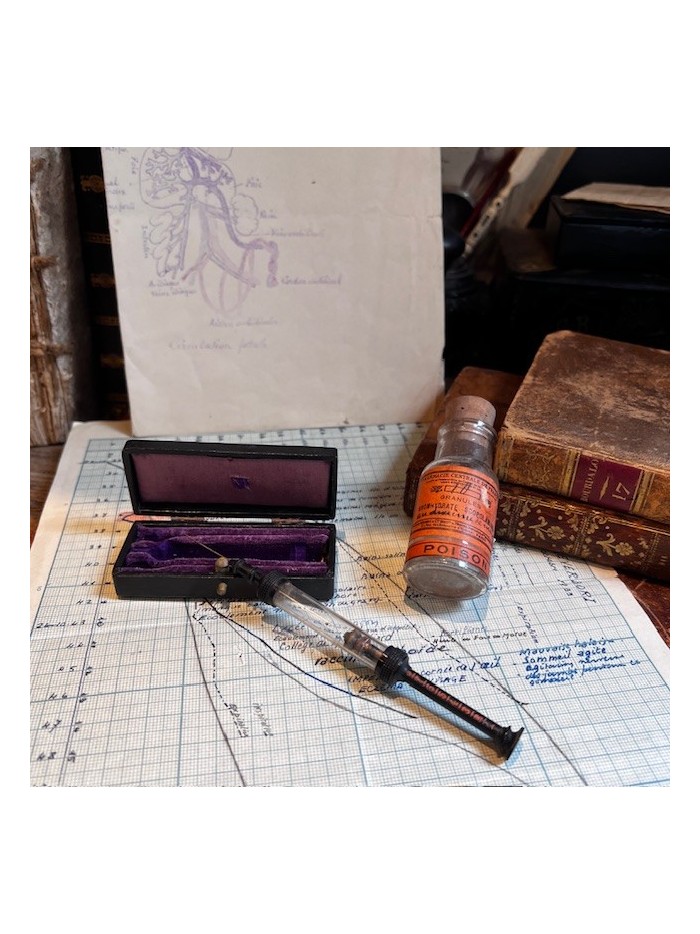- New














Hypodermic Pravaz syringe - 19th century
Glass syringe and celluloid
not functional
PRAVAZ syringe - Antique syringe from the end of the 19th century
Morphine addicts of the end of the XIXth and the beginning of the XXth century often used this kind of elegant syringe in its small case that could be easily slipped into a pocket.
Glass syringe and celluloid.
This syringe has a plunger with graduations and a glass body but the tips are not made of metal but seem to be made of celluloid resin, the ancestor of all plastics, manufactured at the end of the 19th century.
Attractive red graduation clearly visible on the black piston.
A screw step graduated from 0 to 10 allows to adjust its stroke and to measure the quantity of injected liquid.
The syringe is in its small case with purple felt inside. The compartment for the metal wires that were to be inserted into the needle is behind the felt part of the cover, just pull the ribbon to reveal it.
Dimensions of the case: 7.8cmx3cm
Dimensions of the syringe: Length 7.5cm without the needle
not functional
Rue Powder
Rue was an abortive plant
Antique pharmacy bottle - Poison - Toxic
Septichrome
Antique pharmacy bottle
Apothecary vial
Toothpaste - Antique apothecary
Porcelain pot with illustrated plastic lid
Antiseptic
Early 20th century - Caution the lid is cracked
Hydrastis canadensis fluid extract
Antique pharmacy bottle
Apothecary vial
Buckthorns syrup
Antique pharmacy bottle
Apothecary vial
Bulb for hypodermic injection - Camphor (circa 1920)
various manufacturers
Antique wooden box for herbal medicine - Samples of plants, seeds, bark etc.
Camphor
Antique pharmacy bottle - End of XIXth century
Blown glass
Grams / Teaspoons in French: Grammes / Cuillères à café
Antique medicine bottle
Apothecary
Agocholine Zizine
Antique remedy
Cylindrical metal box
EMPTY
Antique drum microscope for botanist, entomologist
Mirror missing
Late 19th century, early 20th century
Cours d'opérations de chirurgie, démontrées au Jardin Royal
Course of surgical operations, demonstrated in the Royal Garden
Published in 1751 in Paris, by d'Houry, sole printer and bookseller to Monseigneur le Duc d'Orléans
Fourth edition
Illustrated with numerous plates and engravings in the text, including the famous plate of Poor Malabou and her scrotal elephantiasis on page 112/113, which the author mentions on page 373.
Cumin Epicea Pill - Pil: Cum Picea
Antique blown glass pharmacy jar
Apothecary
Indigo sulphate solution
Antique pharmacy bottle
Apothecary vial

Hypodermic Pravaz syringe - 19th century
Glass syringe and celluloid
not functional












